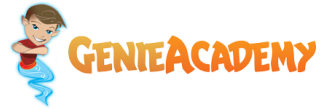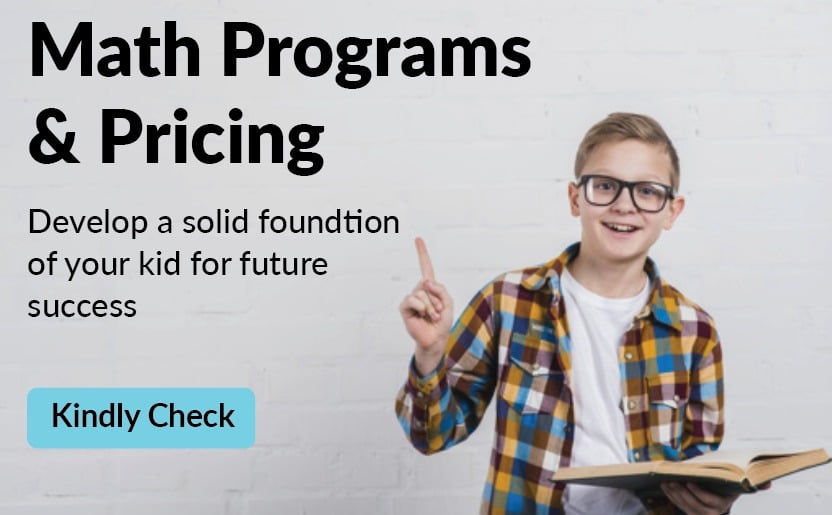I scored 97% on the IFR Written Knowledge Test-an exam most pilots agree is the most challenging written exam for pilots.Its complexity lies not in trick questions or obscure facts, but in its demand for precision: advanced navigation, cryptic weather codes, and procedures designed for flying blind in the clouds.


Here’s the twist: I’ve never been a good test-taker. In college, I barely passed my B.Com and M.Com exams, scraping by with second division—about a 2.0 GPA in U.S. terms. I bombed the GMAT. I couldn’t get into a single MBA program. And yet, somehow, I crushed an exam that stumps professional pilots. So what changed? More importantly, how can you use what I learned to master new skills—or help your child do the same?
Identity Before Mastery
At Genie Academy, we’ve spent years refining a single question:
How do you help someone learn faster, more effectively, and with less effort?
We’ve developed a fully integrated curriculum across Abacus Mental Math, K–12 Math, Reading, Writing, and Coding. Over 7,000 students have come through our programs. I’ve had the privilege of designing learning systems, training coaches, and watching thousands of students move from struggle to confidence in subjects they once feared.
So when I set out to earn my IFR rating, I wasn’t just preparing for a test. I was putting my own philosophy to the ultimate trial.
For years, the IFR was a “someday maybe” goal. I bought the books. Watched the YouTube videos. Took a few lessons. But like most someday goals, it stayed in the background.
Then came Raleigh
I flew down to North Carolina for an EO event to hear Dr. Benjamin Hardy speak. After the talk, I returned to the airport and realized I’d left the plane’s master switch on. The battery was dead. We were grounded.
The next morning, the weather turned. Low clouds and visibility. We couldn’t take off.
And that’s when it hit me.
If I had been instrument-rated, we could’ve left safely. I wasn’t stuck because of the plane. I was stuck because of who I wasn’t.
That moment changed everything.
I stopped thinking, “I want to get my IFR rating.”
And I started saying, “I am becoming an IFR pilot.”
That shift—from aspiration to identity—transformed my entire approach. I didn’t need more motivation. I needed alignment.
As James Clear writes in Atomic Habits:
“Every action you take is a vote for the type of person you wish to become.”
Once I adopted that identity, studying didn’t feel like work. It felt like living into who I already was.
The Ancient Blueprint for Mastery
In Japanese martial arts, there’s a framework for learning called Shu Ha Ri.
It has nothing to do with aviation. But it had everything to do with how I learned to fly.
The model describes three stages of mastery:
-
Shu (守): obey the rules. Copy the teacher. Don’t ask why.
-
Ha (破): break the rules. Understand the principles. Begin to adapt.
-
Ri (離): transcend the rules. Move freely. Act without thinking.
It sounds philosophical—and it is—but it’s also brutally practical. Most people never make it past Shu. They stop when they don’t understand something. Or they quit when it feels mechanical.
But if you trust the process, something remarkable happens.
When I first started studying for the IFR exam, I was firmly in Shu. I didn’t understand most of what I was reading. Weather codes. Approach plates. HSI indications. It all felt like a foreign language. But I kept going.
Not because I understood.
Because my identity depended on it.
I let go of the need to grasp everything on the first try. Instead, I immersed myself. I reviewed the material again and again. I repeated things I didn’t yet comprehend. It felt inefficient—but it wasn’t. It was Shu.
Then slowly, Ha emerged.
Concepts began to connect. My instructor, Gene, broke things down methodically, step by step. I started to understand how the moving pieces fit together. Hold entries. Lost comm procedures. Alternate minimums. They stopped being abstract—they started becoming patterns.
I reached a plateau. Practice test after practice test came back at 80%. I needed 90% to qualify for the real exam. I had hit the wall between Ha and Ri.
But I knew something most learners don’t:
Plateaus are not signs of failure. They are signs that integration is about to happen.
So I stayed with it.
The Plateau—and the Breakthrough
At 80%, I was stuck.
No matter how many practice tests I took, I couldn’t break past that number. I understood the material conceptually, but something was missing. Some questions kept slipping through the cracks—questions I couldn’t reason my way through. And that’s when I realized: understanding had taken me as far as it could.
The rest would have to be memorized.
This was humbling. I had spent most of my academic life fighting rote memorization. I believed real learning was about logic and insight, not repetition. Indian education had scarred me with its obsession over cramming. Memorization felt like a betrayal of everything I stood for.
But I needed to pass the test.
So I did something I never thought I’d do: I made flashcards. A lot of them.
Out of 1,200 practice questions, I identified 300 I couldn’t consistently answer. These were my weak points—the confusing, the counterintuitive, the ones I just couldn’t retain. Many were about physics: my old academic nemesis. Some were visual problems involving the HSI or hold entries. A few just made no sense at all.
I didn’t try to analyze them. I didn’t try to argue with them. I just started memorizing.
Two minutes a day. Then five. Then ten. Flashcards in the morning. Flashcards before bed. Over time, something shifted. The patterns that once felt arbitrary started to stick. I began to recognize structures. Scenarios. Logic.
Memorization didn’t block understanding.
It created the scaffolding for it.
It’s easy to think of memory as the opposite of intelligence—as if smart people just know things. But what if it’s the other way around? What if the smartest learners are simply the ones who scaffold their minds with enough raw material to start seeing deeper connections?
From Theory to Instinct
Ri is the moment the training disappears.
You’re no longer repeating the steps. You’re no longer analyzing the logic. The knowledge lives somewhere deeper. It’s instinct now.
For me, Ri didn’t happen in a classroom or during a test. It happened under the hood—literally.
Gene, my instructor, had me fly a 250-mile IFR cross-country from Lumberton, NJ to Salisbury, MD to Baltimore and back. Under the hood, I couldn’t see outside the cockpit. No visual cues. Just the instruments. Just the procedures. Just the system.
And that’s when it all clicked.
The flashcards. The rote memory. The seemingly random facts I had drilled into my brain—suddenly, they weren’t abstract anymore. They were tools. Real tools. I used them to set up holds, to interpret weather, to calculate fuel and alternate minimums while descending through layered cloud.
This wasn’t recall.
This was application.
The grooves in my brain weren’t theoretical anymore—they were tactile. Physical. The information had moved from my head into my hands.
That’s the thing about Ri. It doesn’t feel like mastery. It feels like ease. Like flow. But it only arrives after you’ve struggled through Shu and pushed through Ha. Most people never get there—not because they’re incapable, but because they mistake the plateau for the peak.
They quit before the system has time to integrate.
Learning How to Learn
Most people think understanding comes first, and then you memorize.
But what if it’s the other way around?
What if we don’t remember because we understand—
We understand because we remember.
That was the hidden lesson of the IFR. The flashcards. The repetition. The struggle to decode strange instruments and unfamiliar acronyms. It wasn’t wasted time. It was structure. Scaffolding. A framework for deeper thinking.
And it’s not just true in aviation. It’s true in math. In reading. In writing. In any skill that matters.
At Genie Academy, we’ve already begun weaving these insights into how we teach.
Not just what students learn—but how they learn.
-
We help students define an identity: not “I’m learning math,” but “I am a math thinker.”
-
We build flashcard systems personalized to each child’s level—because memorization is still a foundation, when used correctly.
-
We add gamification and social accountability—points, leaderboards, progress tracking—because motivation thrives in public.
-
And we design our teaching for all three stages: Shu, Ha, Ri. Obedience. Experimentation. Integration.
Because real mastery isn’t an accident. It’s a process.
And once you understand that process, you can apply it to anything—from long division to instrument flying, from your child’s education to your own transformation.


